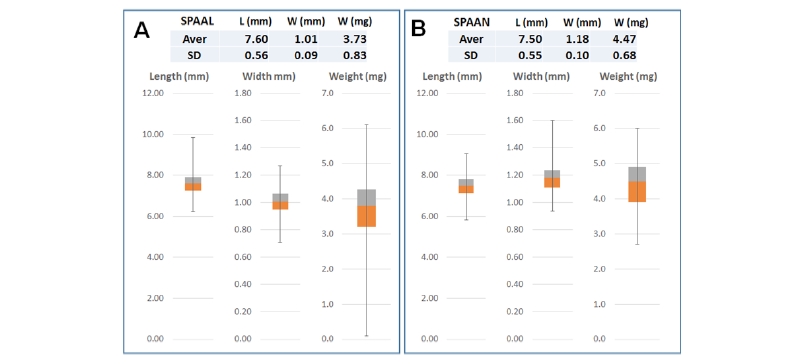Abstract
In this study, several biological characteristics were investigated with seeds (caryopses) and rhizome of a highly invasive cordgrass (
Figures & Tables

Fig. 1.Size and weight distribution of (SPAAL) and S. angulata (SPAAN) seeds collected in Jindo and Gangwhado, Korea.


